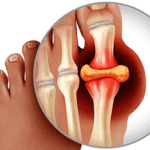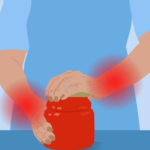Pilates is well-known for its ability to improve core strength, flexibility, and posture. However, its benefits extend beyond the core, offering significant advantages for building arm strength and flexibility as well. This low-impact exercise method engages various muscle groups through controlled movements, making it ideal for people of all fitness levels. In this article, we’ll explore how Pilates can specifically enhance arm strength and flexibility, along with frequently asked questions.
How Pilates Strengthens the Arms
While Pilates is primarily associated with core strengthening, many exercises also target the upper body, specifically the arms, shoulders, and upper back. The controlled nature of Pilates movements helps build endurance, stabilize the joints, and improve muscle tone in the arms. Here’s how:
- Bodyweight Resistance: Pilates uses your body weight as resistance, promoting muscle endurance without the need for heavy equipment. Exercises like plank variations and push-ups require you to hold your body up using your arms, helping to build strength and muscle tone.
- Light Weights and Resistance Bands: Incorporating light weights or resistance bands into Pilates routines can further enhance arm workouts. These accessories add an extra level of resistance, helping to sculpt and strengthen the arm muscles.
- Functional Movements: Pilates focuses on movements that mimic everyday activities, which is especially beneficial for arm function. Exercises like arm circles and Pilates boxing target the shoulder muscles, helping improve mobility and preventing injury during daily tasks.
Enhancing Arm Flexibility with Pilates
Flexibility is a key component of Pilates, and many exercises are designed to increase the range of motion in the arms and shoulders. Here’s how Pilates promotes flexibility:
- Controlled Stretching: Pilates emphasizes slow, controlled movements that gently stretch muscles. Exercises like side planks with arm lifts and swan dive stretch the arms while building strength, promoting long, lean muscles without bulk.
- Improved Mobility: Pilates improves joint mobility, especially in the shoulders, by engaging stabilizing muscles through a full range of motion. This helps increase flexibility, reduce stiffness, and prevent injuries.
- Balanced Muscle Development: Pilates strengthens and lengthens muscles simultaneously, promoting balance. For example, exercises like Pilates swimming engage the entire upper body, encouraging a balanced arm movement that prevents over-tightening and stiffness in the arm muscles.
Specific Pilates Exercises for Arm Strength and Flexibility
- Plank to Push-Up: This compound exercise engages the core while toning the arms and shoulders. Starting in a plank position, you lower into a push-up, keeping the elbows close to the body.
- Side Plank with Arm Lift: Holding a side plank while lifting the top arm targets the shoulder and obliques, promoting strength and flexibility in the upper body.
- Swan Dive: This advanced move strengthens the back and arms while stretching the chest and shoulders, promoting flexibility and stability in the upper body.
- Tricep Dips: Using bodyweight or a chair, this exercise tones the triceps and engages the shoulders.
Frequently Asked Questions
- Can Pilates replace traditional weightlifting for arm strength?While Pilates can significantly improve arm strength and tone, it typically doesn’t provide the same muscle mass gain as traditional weightlifting. However, it offers a balanced approach to strength and flexibility, making it ideal for individuals looking to enhance muscle endurance without bulk.
- How often should I practice Pilates to see improvements in arm strength?To notice improvements in arm strength and flexibility, aim to practice Pilates 3-4 times per week. Consistency is key, and gradual progression in the intensity and duration of your workouts will lead to better results.
- Can beginners benefit from Pilates for arm strength?Absolutely. Pilates is highly adaptable, making it suitable for beginners. Many arm-strengthening exercises can be performed with or without added resistance, allowing individuals to start at their own pace and increase difficulty as they build strength.
- Is Pilates enough to maintain overall arm health?Yes, Pilates can be an effective way to maintain arm health, especially when combined with a balanced fitness routine. It promotes joint mobility, strengthens stabilizing muscles, and improves posture, all of which contribute to overall arm function and health.
- Does Pilates help with arm flexibility if I have tight muscles?Yes, Pilates is excellent for loosening tight muscles. The controlled stretches and focus on mobility help lengthen muscles and improve flexibility, which can alleviate tightness in the arms and shoulders.
Conclusion
Pilates is a versatile and effective way to enhance both arm strength and flexibility. By incorporating Pilates into your fitness routine, you can strengthen your muscles, increase your range of motion, and improve overall upper-body function. Whether you’re new to exercise or a seasoned athlete, Pilates offers a well-rounded workout that will benefit your arms and entire body.





